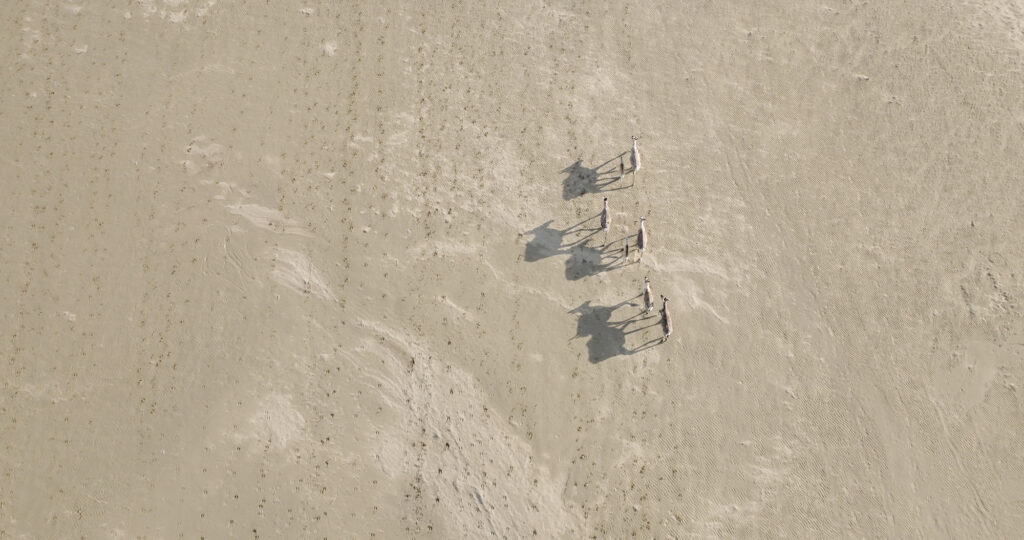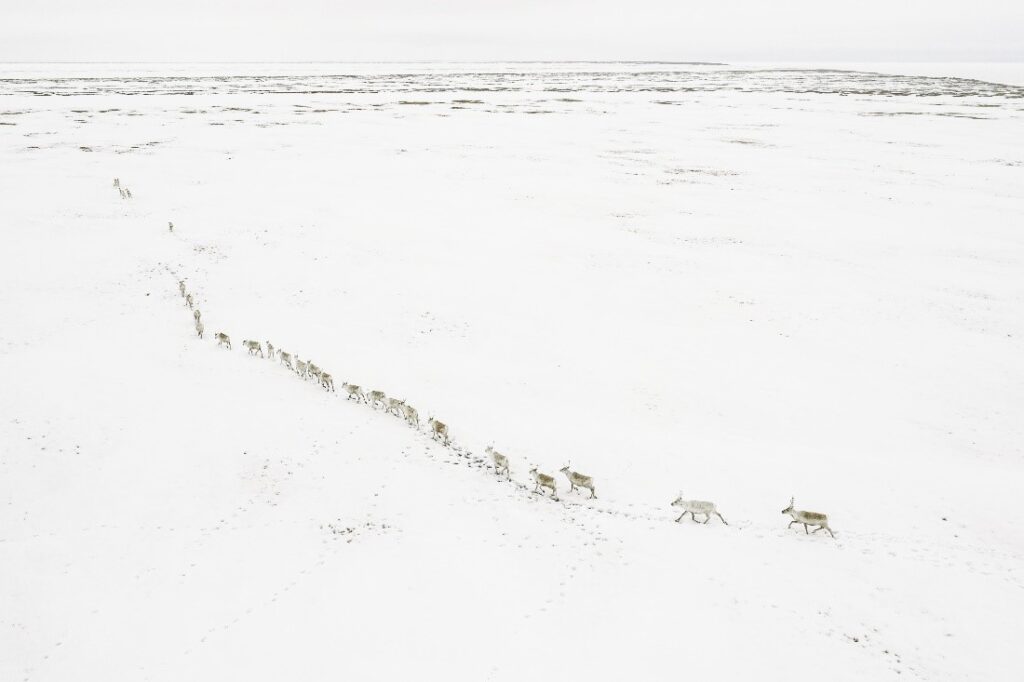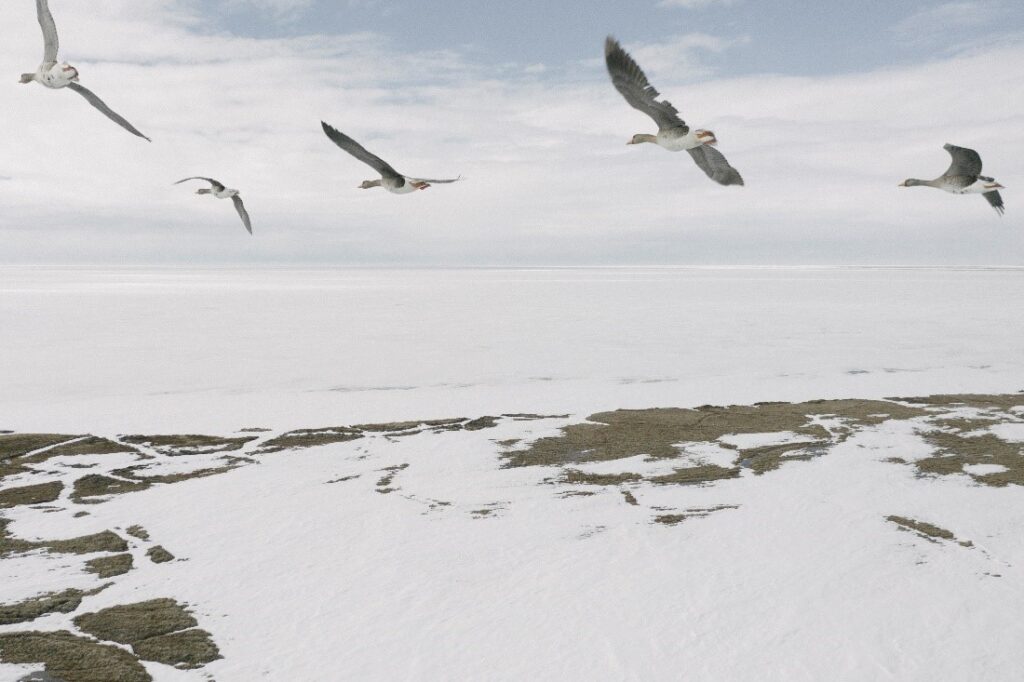Great Alaska Migrations

Alaska boasts some of the most incredible wildlife in the U.S., not only for the sheer number of creatures that call Alaska home, but also for the hundreds and thousands of miles so many migratory species cover every year.
When President Carter visited the Arctic Refuge in 1990, he called it “America’s Serengeti,” comparing its likeness to the vast abundance of wildlife found in Tanzania and the expansive landscapes many animals traverse in their annual migrations there.
Take for example the Teshekpuk caribou herd — one of four main herds in Alaska — whose spring calving grounds around Teshekpuk Lake sit hundreds of miles from their more southern winter migratory corridor. Though many Teshekpuk caribou stick near the Arctic Coastal Plain and Brooks Foothills throughout the winter months, the herd is more than 41,000 animals strong and spreads its migration across the Western Arctic, depending on food availability and weather conditions. However, increased oil and gas development in the region — including ConocoPhillips’ recently approved Willow project — continues to impact the Teshekpuk caribou herd as well as the local Native villages like Nuiqsut that rely on caribou for subsistence.

Similarly, the Western Arctic caribou herd, often the largest of Alaska’s 32 herds, has recently been in decline. While it is not uncommon for caribou populations to fluctuate, the herd is now down to 164,000 from nearly 500,000 during its most recent peak population in 2003. This herd moves in a range stretching from Alaska’s North Slope in the summer down to the eastern Seward Peninsula in the winter, an expanse the size of California. The herd is facing threats from development projects like the Ambler Mining District Industrial Road — a 211-mile project that would cut through a large swath of this migratory corridor — putting the caribou at further risk. In addition to development, climate change continues to put pressure on these grazing Arctic species as vegetation shifts from hearty lichens and mosses (perfect food for caribou) to nearly inedible woody shrubs.
But it’s not just megafauna like caribou that rely on the intact, undisturbed range of Alaska to thrive. Salmon in the Yukon River similarly travel hundreds of miles from the Bering Sea to Alaska’s interior to mate and spawn. But climate change is also playing a major role in their demise. In 2022, low return numbers shut down subsistence fishing for Chinook and chum salmon.

And of course, we cannot forget the millions of birds that migrate through Alaska every year, including the record-setting bar-tailed godwit which travels more than 7,500 miles from New Zealand to Alaska each spring. Which brings us back to Teshekpuk Lake and its surrounding wetlands, an area of global migratory bird significance. Tens of thousands of birds rely on this ecologically rich ecosystem and safe molting ground, including several species of geese, more than a dozen other species of birds on the Alaska WatchList, and many threatened species, some near endangerment. Like the Teshekpuk caribou herd, these thousands of migratory birds face ongoing risks as oil and gas development continues to wind its way through the Western Arctic. Another reason why Alaska Wilderness League continues to fight for lasting Arctic protections.
Cover photo courtesy: © Florian Schulz / visionsofthewild.com
